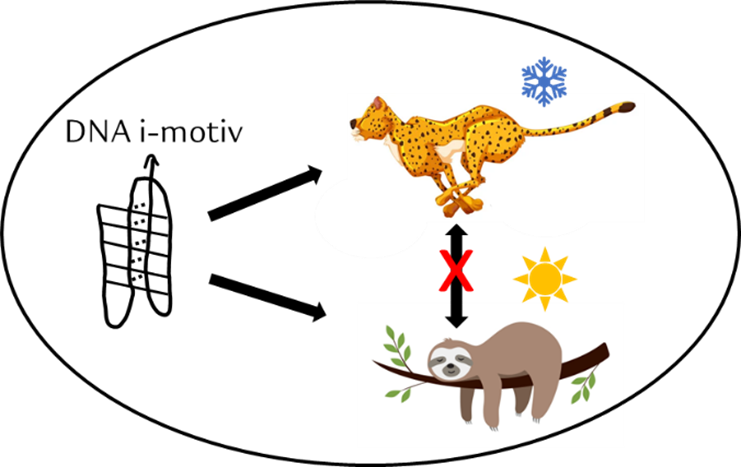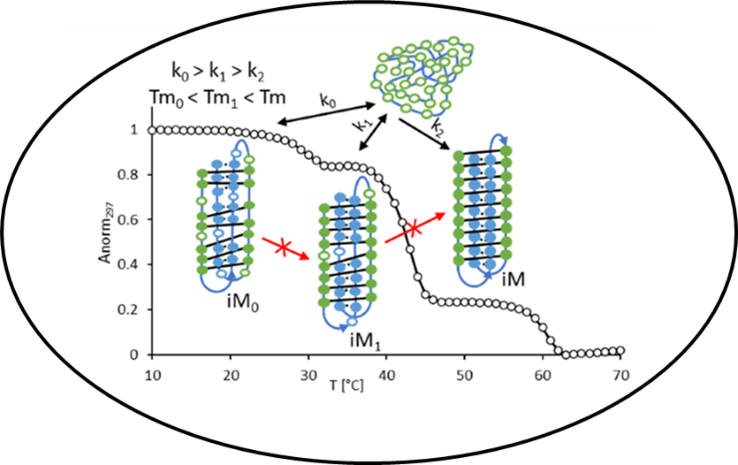A new article on i-motif DNA formation published in Nucleic Acids Research
27. 4. 2023
Are you interested in DNA structure and have you heard that there are other DNA forms besides the well-known double helix proposed by Watson and Crick seventy years ago? If you want to know more, you can read the following lines, or directly the text of the latest paper by our colleagues from the Department of Biophysics of Nucleic Acids (DBNA), published in the prestigious journal Nucleic Acids Research: doi: 10.1093/nar/gkad119. 
Among the most common alternatives to the DNA double helix are four-stranded structures arising in guanine-rich regions, which we call guanine quadruplexes, or in cytosine-rich called intercalated motifs (i-motifs). These four-stranded structures, or rather their differentiation from the double helix, are very well observed by spectroscopic methods, in which DBNA staff are real experts. The published work was focused on the investigation of the formation of DNA i-motifs in vitro, specifically on their kinetic-thermodynamic parameters. It was shown that sequences consisting of longer consecutive cytosine blocks first form shorter i-motifs, which are a kind of pre-forms to the formation of an ideal i-motif, paired by the maximum number of cytosines available in the DNA sequence. The shorter, imperfect i-motifs are formed very quickly as a result of rapid cooling, whereas the formation of the ideal i-motif requires sufficient time and elevated temperature necessary to remove all the i-motif pre-forms. Understanding the principle of gradual i-motif formation allows us to assess whether any of these alternative structures may participate in the control processes in the cell. i-motifs have been discovered in some promoters, i.e., regions of DNA that control whether genes are turned on or off, or in telomeres, the terminal regions of chromosomes that are associated with the aging process. The biological relevance of each i-motif form is determined by the fact that cellular processes occur very rapidly. Therefore, i-motifs that arise very quickly will be more interesting and important. Whether and to what extent they can play a role in biological processes should be answered by future research.

